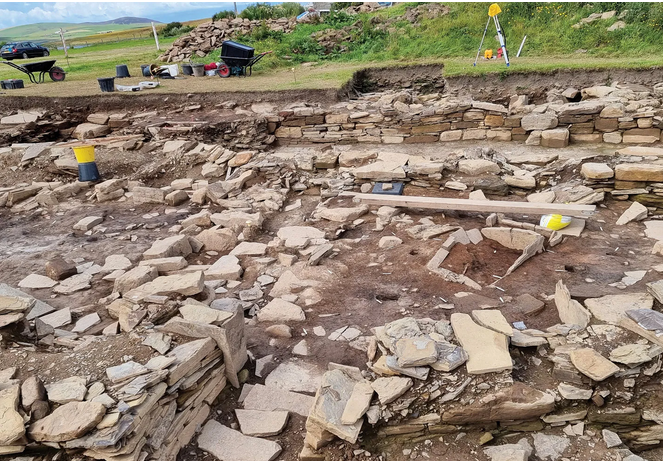Built around 3,000 BC, the sheer size and quality of the ancient structures on the Ness of Brodgar in Orkney are impressive. They were originally crowned by flagstone roofs (whose remains often scatter their interiors), with walls that were made of carefully pick-dressed blocks and slabs of stone. Some of the raw materials seem to have been deliberately selected for their color and placed for visual effect, while others were enhanced using pigment. In Structure 8, for example, a prominent stone within one of its walls had been decorated with curvilinear designs in red, black, and yellow, while other stones on the site were adorned with bright red and orange chevrons.
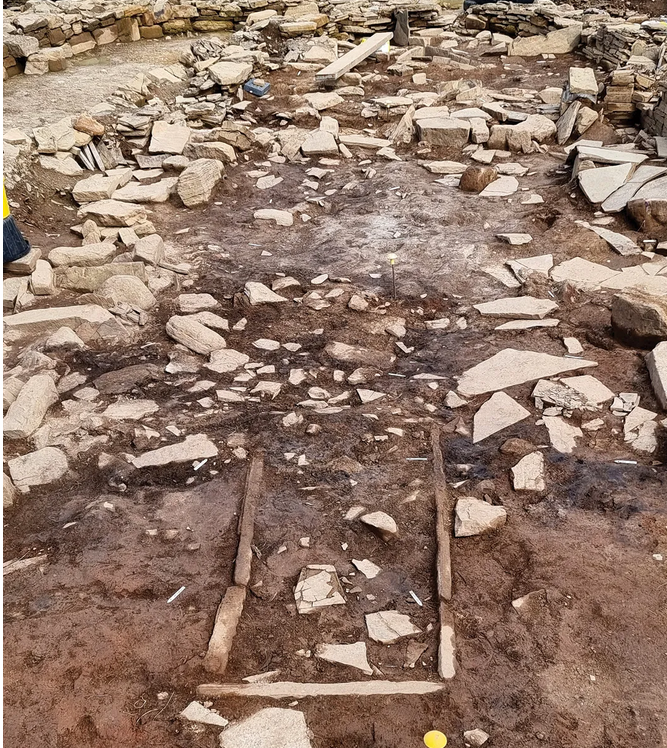 Structure 5 in its present form is an elongated oval building measuring at least 15m by 6.5m (its full extent is yet to be exposed). Five large post-holes are also thought possibly to reflect an earlier design with mighty timbers; these were later removed, and artifacts including a decorated stone and a large piece of whalebone placed in their empty sockets.
Structure 5 in its present form is an elongated oval building measuring at least 15m by 6.5m (its full extent is yet to be exposed). Five large post-holes are also thought possibly to reflect an earlier design with mighty timbers; these were later removed, and artifacts including a decorated stone and a large piece of whalebone placed in their empty sockets.
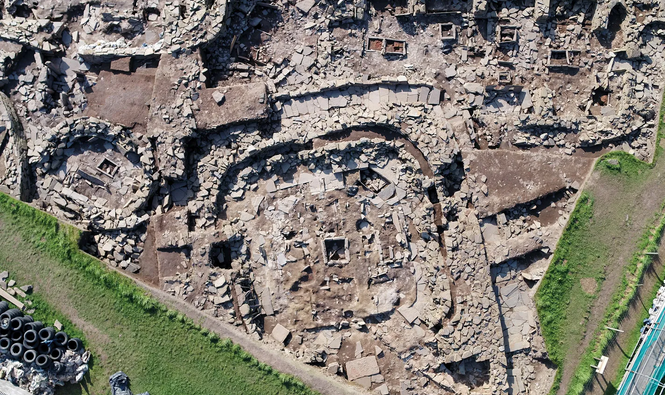 Structure 10 is easily the most impressive building on the site, truly monumental in form, with a grandly square design. To the front, an elaborate forecourt extends its length.
Structure 10 is easily the most impressive building on the site, truly monumental in form, with a grandly square design. To the front, an elaborate forecourt extends its length.
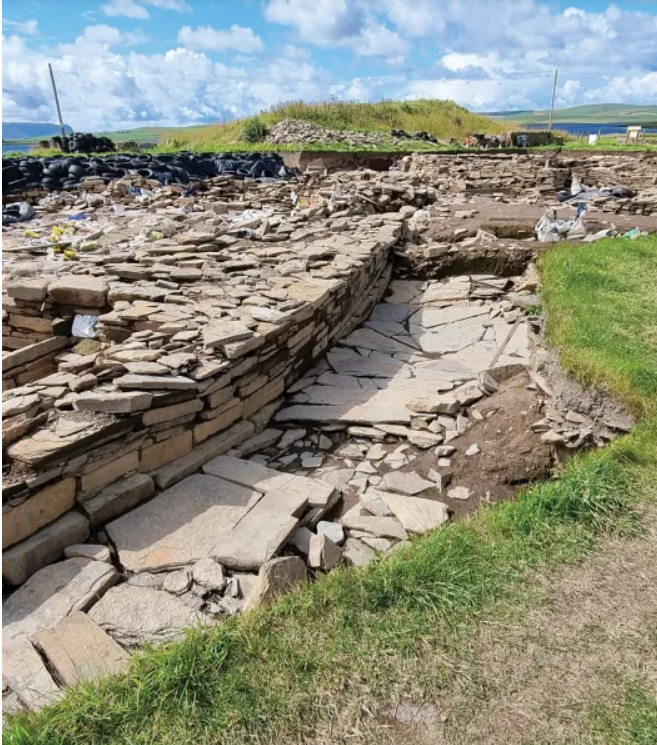 Its interior is dominated by a large hearth, and, while much of the stonework of its walls has been robbed, the remaining carefully dressed slabs of red and yellow sandstone highlight what an impressive building this would have been.
Its interior is dominated by a large hearth, and, while much of the stonework of its walls has been robbed, the remaining carefully dressed slabs of red and yellow sandstone highlight what an impressive building this would have been.
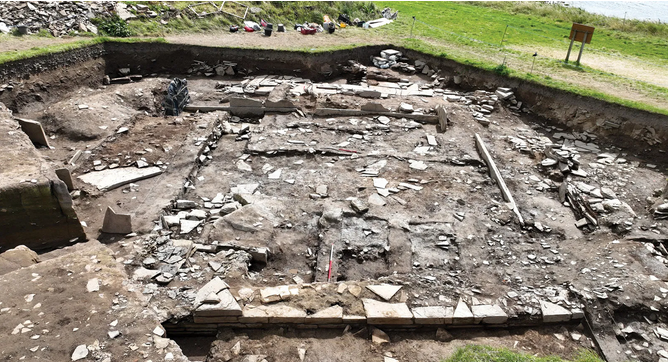 The remains of another well-built structure has intriguing similarities to Structure 10. This was Structure 27: a large rectangular building. At some point after this structure had gone out of use, it was covered by a huge mound of midden, but it had once been an imposing construction, measuring 17m by 11m with 2m-thick walls. The remains of a stone-tiled roof were found within its interior, and intriguingly this inner space was defined by a rectangle of enormous slabs – weathered and clearly reused from elsewhere – almost reminiscent of recumbent standing stones.
The remains of another well-built structure has intriguing similarities to Structure 10. This was Structure 27: a large rectangular building. At some point after this structure had gone out of use, it was covered by a huge mound of midden, but it had once been an imposing construction, measuring 17m by 11m with 2m-thick walls. The remains of a stone-tiled roof were found within its interior, and intriguingly this inner space was defined by a rectangle of enormous slabs – weathered and clearly reused from elsewhere – almost reminiscent of recumbent standing stones.
You can read the original article at the-past.com

